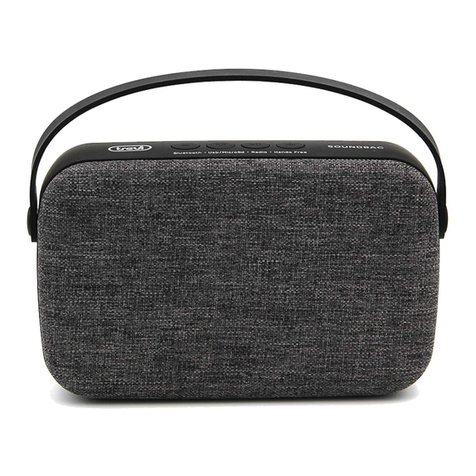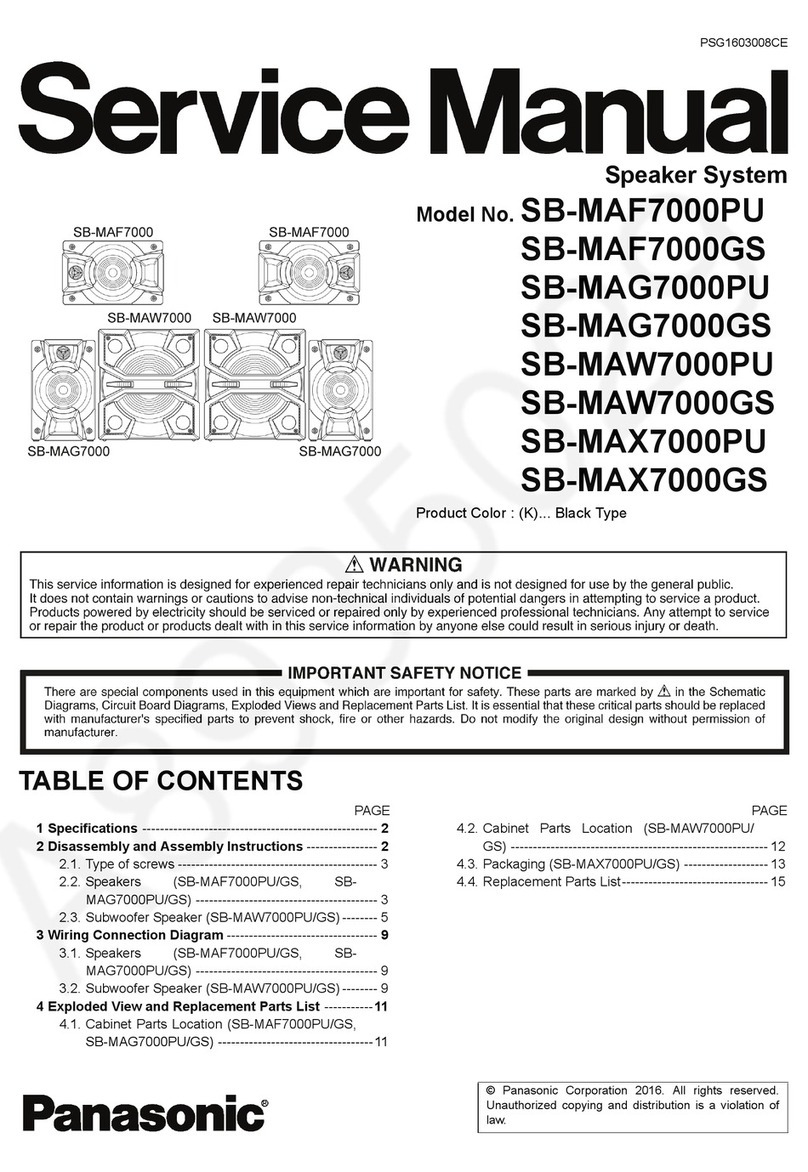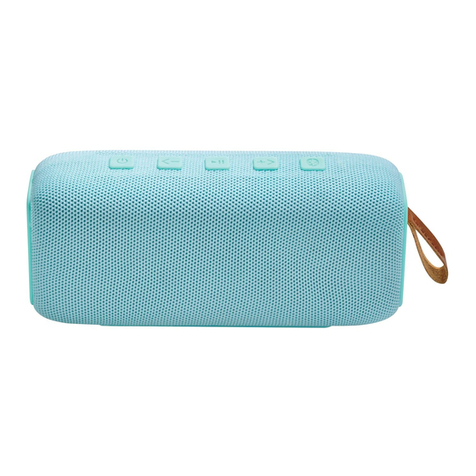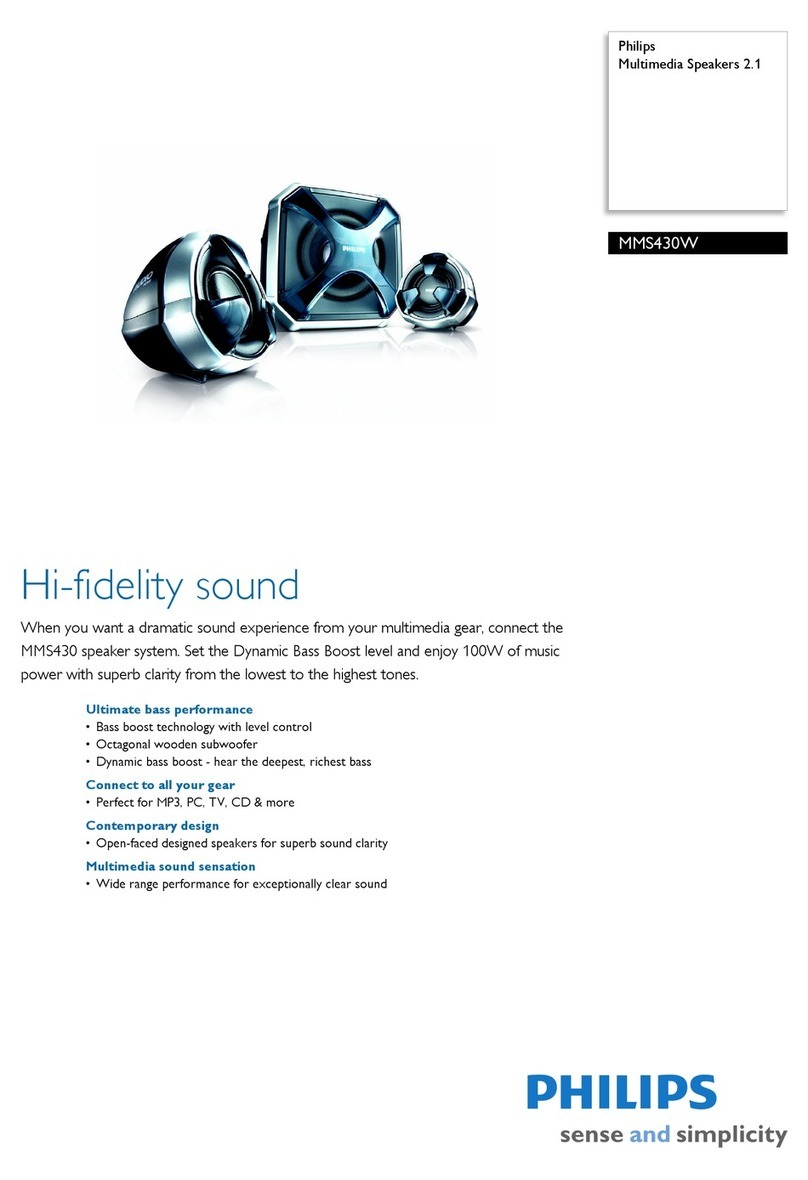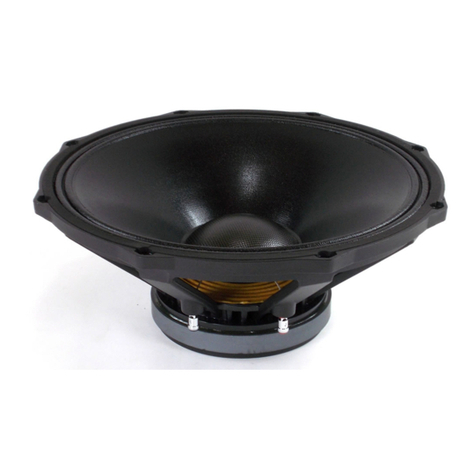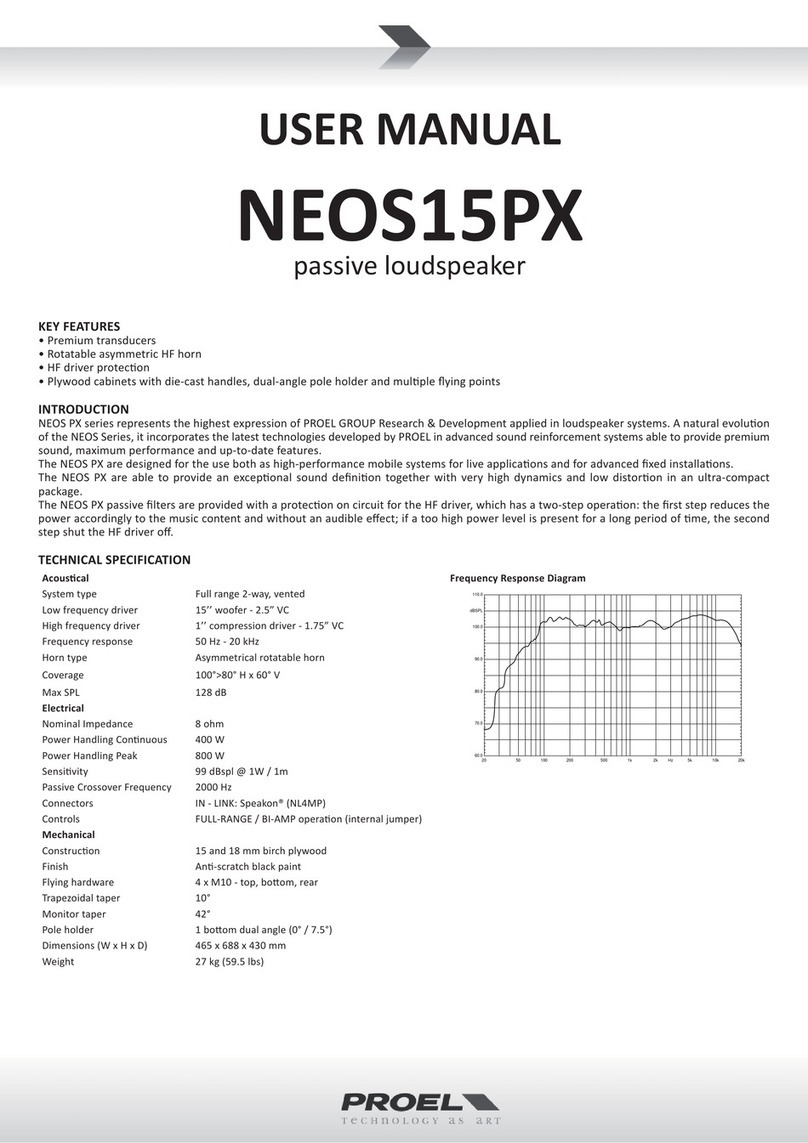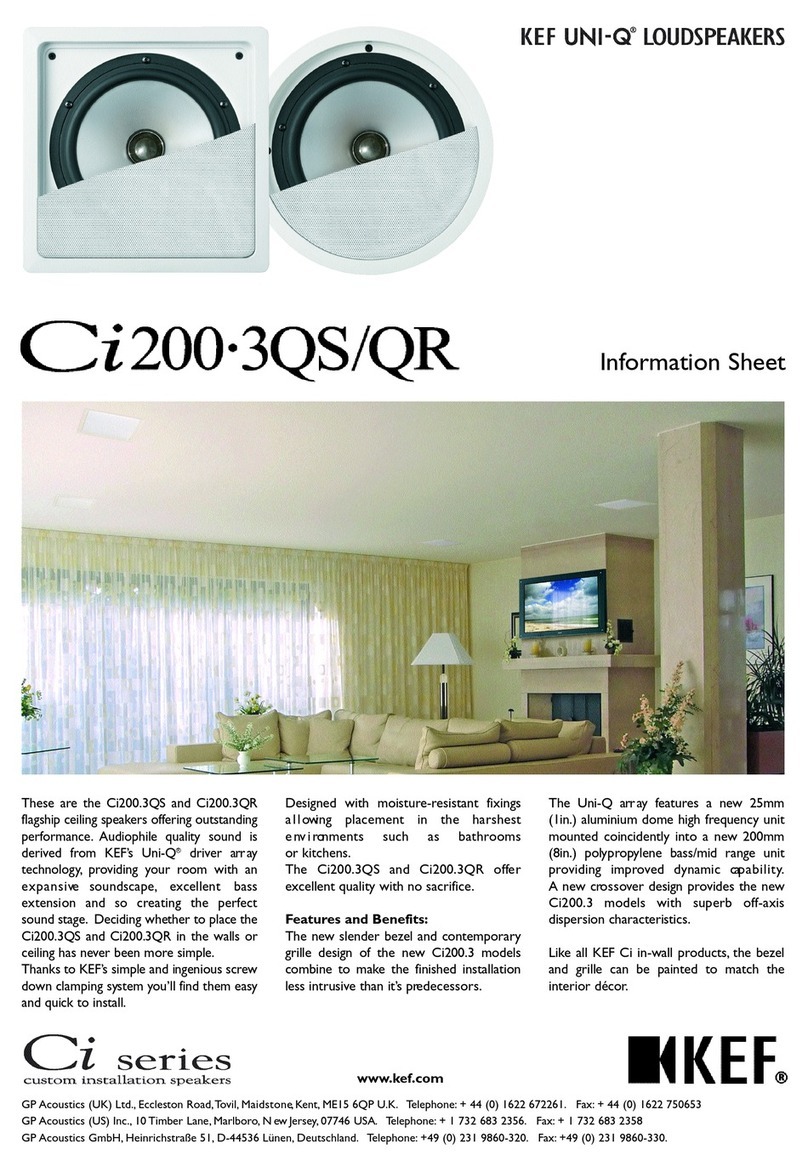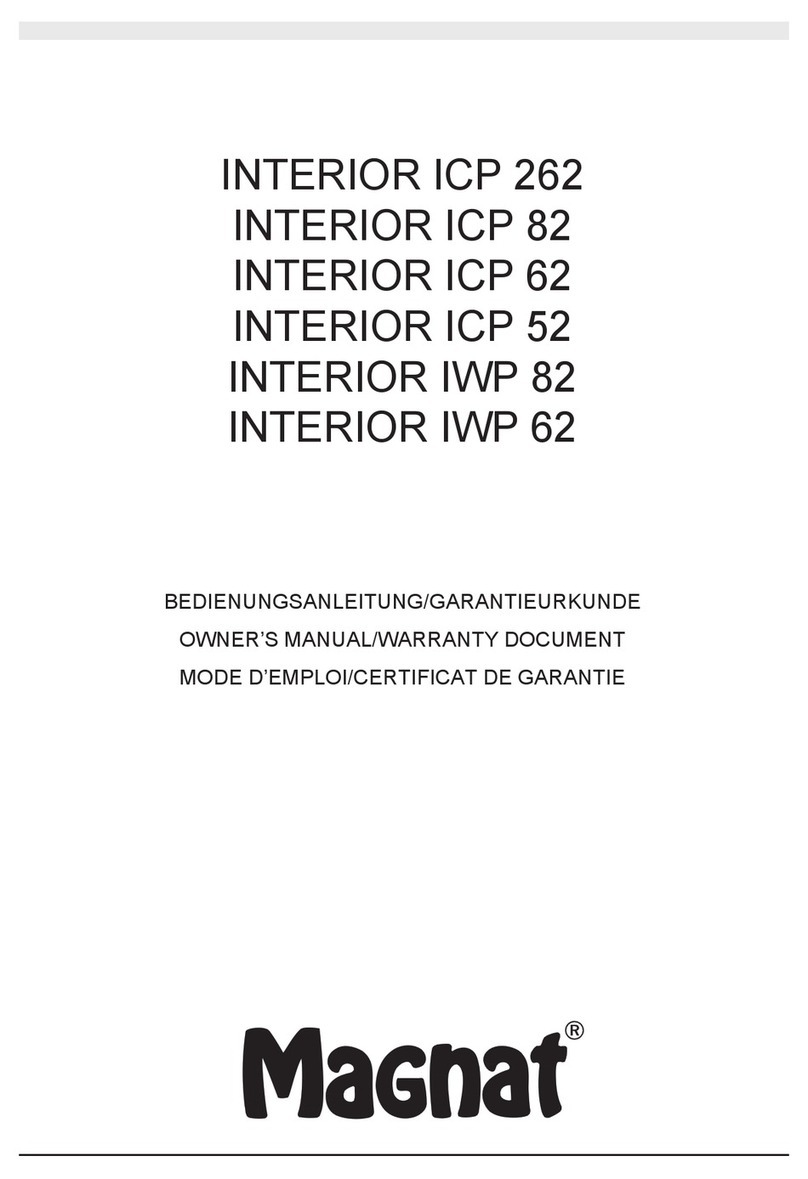Fein Audio V3 User manual

Operation Manual
Fein Audio V3
Loudspeaker

Table of contents
General information Point 1
Safety instructions Point 2
Carton contents Point 3
Device description Point 4
Operating principle Point 5
Setting up and positioning the speakers Point 6
Running-in phase Point 7
Connection to the mains supply Point 8
Commissioning and operation Point 9
The electronics Point 10
Technical data Point 11
DSP & Processing Point 12
Audio Point 13
Troubleshooting Point 14
Ground loops Point 15
Warranty Point 16
Packaging Point 17
Environmental information Point 18

1 General information
Welcome to Fein Audio. Please take time to read this manual carefully before using
this product. Keep the manual in a safe place and pass it on to subsequent users.
2 Safety instructions
The power supply system must be protected by a miniature circuit (MCB) breaker and
a residual current circuit breaker (RCD) according VDE 0100.
Damaged power supply cables must not be used. Only approved power cables with
suitable plugs and sockets are permitted. Only a approved professional may remove
and repair the electronic unit. For cleaning, disconnect the speaker from the power
supply and use damp cloths only. Make sure that no liquids can enter the interior of
the speaker, the electronics devices or on the speaker membranes.
Ensure that the heat sink is adequately ventilated.
Make sure that your speakers are securely positioned. Falling over can lead to
unpleasant to serious injuries.
Cables must not become a tripping hazard.
The units are in compliance with the EMC and LVD directives applicable throughout
Europe and have the CE mark.
The loudspeaker generates a magnetic stray field that extends beyond the enclosure
dimensions. Therefore, a minimum distance of 0.5 m should be established between
magnetically sensitive items (CRT televisions, computer monitors, discs, audio and
video tapes, cheque cards, etc.) and the loudspeaker. Stray magnetic fields do not
affect LCD, OLED and plasma screens.
Operate the loudspeakers at a moderate volume. Too much volume is harmful for
health!
Do not make any changes of the product!
This product is exclusively intended for indoor use. Outdoor use may cause damage
to the product and personal injury.
3 Carton contents
The box contains one power cable per speaker.
4 Device description
The Feinaudio V3 is a fully active 3-way line source speaker with integrated DSP.

5 Operating principle
The linear arrangement of transducers creates a much better acoustic impression
than conventional loudspeakers when carefully tuned. This arrangement of the
transducers creates a cylindrical wave in the near field, whereas in the far field a
spherical wave develops. The result is a stronger orientation of the sound signal in
the vertical direction in space.
This bundling of the sound signal means that less sound is emitted to the floor and
ceiling. Particularly in rooms with a high sound pressure level, there are fewer
unwanted reflections, which disturb the sound image sensitively and unpleasantly. In
addition to the high quality of the sound transducers, the prevention of reflection
leads to a crystal clear acoustic room impression over the full frequency range.
A prerequisite for optimum hearing quality with this arrangement of the transducers
is a sufficient distance of the listener from the source. The listening distance should
be at least 2 m
6 Setting up and positioning the speakers
The loudspeakers should be positioned at a distance of 1.5 to 3 m in the two corners
of an equilateral triangle, the third corner forms the listening area. The distance to
the side walls must be at least 0.5 m and the listening distance at least 2 m.
The operating position of the speaker is upright and should therefore be firmly placed
on the floor. You can use the supplied supporting feet for this. However, you can also
exchange these for spikes, for which M8 threads are provided on the base of the
speaker. Unscrew the feet and exchange them for the spikes of your choice. It is
advisable to attach and adjust the spikes only after the optimum position for the
speaker is found. Be careful, direct contact with the floor can cause ugly scratches,
which can be prevented by using a soft washer, for example. When replacing the
speaker, make sure that it does not tip over and get help to overcome the weight of
the speakers.
If the cabinet does not stand firmly and wobble-free on the floor, you can adjust the
feet or spikes until the speaker stands firmly on the floor. Then tighten the lock nuts
on the cabinet.
There is a further optimisation for improving the sound quality of the speaker.
For both stereo and home theater installations, try to set up the environment
acoustically similar for all speakers. If one speaker is placed near an acoustically hard,
bare wall, and the other is surrounded by cushioning material such as upholstery and
curtains, the sound quality will decrease and the overall acoustic impression will be
distorted.

Picture 1

7 Running-in period
Like any technical device, a loudspeaker must be run in, because there are slight
improvements in the acoustic characteristics of the loudspeaker. For example, if it
has been stored in a cool environment, it takes time until the damping components
and the suspension of the chassis regain their optimum mechanical properties. The
suspension of the drivers becomes more flexible during the first hours of operation.
The time required for the speaker to reach its optimum reproduction quality varies
depending on the history and treatment of the speaker. It may take up to a week for
the speakers to stabilize in the event of large temperature differences between
storage and commissioning. A minimum of 15 hours of operation is required before
the mechanical parts can perform their optimum function. An ambient temperature
that is as constant as possible ensures the reproduction quality of the loudspeaker.
(In DIN EN 60204-1, ambient temperature refers to the temperature of the air or
other medium in which equipment is used as intended. It is part of the physical
ambient and operating conditions, the non-observance of them may exclude a
warranty claim).
8 Connection to the mains supply
Before using the speakers, wait until their temperature has adjusted to room
temperature. Too large temperature differences cause condensation in the
electronics devices and in the loudspeaker, resulting in short circuits. This can lead to
considerable damage to the electronics devices and even up to burning loudspeakers.
The temperature adaption can take several hours, depending on how the speakers
were previously stored.
Power is supplied via a standard grounded power cable. The power plug at one end
of the cable is plugged into the power socket as usual, the other so-called Powercon
plug is connected to the blue input socket of the active module at the loudspeaker.
The Powercon plug can only be plugged into the socket in one orientation, after
connecting the plug turn it a quarter turn clockwise until it locks into place. This
ensures a secure connection with the device. To release, pull back the slider on the
plug and turn the plug a quarter turn to the left and pull it out of the socket.
The mains voltage may be in the range of 110 V to 230 V, and the power frequency
between 50 Hz and 60 Hz. The loudspeaker can be switched on and off with a
separate switch. After switching on, the processors are initialized and all components
are tested for function. Only then is the loudspeaker ready for operation.

9 Commissioning and operation
After you have set up your speakers and connected the power supply cables as
described in point 8, connect the signal cables.
The output jacks L/R from the preamp/amplifier to the XLR -
Input sockets on the V3 speakers (see picture 2)
The input gain on the V3 is set to -10dB as default. The volume control of the
preamplifier ect. Must be set to the lowest value to avoid overmodulation.
Now switch on the V3 speakers at the power switch, as well as the preamplifier and
the music source.
Then turn up the volume control on the preamplifier to room volume. If the volume
control is between 50% and /75%, you can leave the setting on the V3 gain control. If
at a value of 75% the volume is too low, turn the Gain control clockwise to the
desired volume. Otherwise, decrease the volume by turning the Gain knob
counterclockwise.
If your preamplifier does not have balanced XLR audio outputs but RCA (Cinch)
connectors, use an appropriate adapter or an audio cable with RCA plugs to XLR-F
3x1pin connectors.
The loudspeaker can be adapted to your requirements by acoustic room calibration.
The preset switch on the loudspeaker stores 8 presets for the most common room
parameters, which can be activated as required. In general, this selection of presets is
sufficient to adjust the speaker to the room.

Picture 2

Presets
1 Linear adjustment
2 Woofer +2dB
3 Woofer -2dB
4 Woofer -4dB
5 Midrange +2dB
6 Midrange -2dB
7 Tweeter+2dB
8 Tweeter -2dB
10 The electronics
- The 3 output stages use a Class D module with an output power of 3x500W at 4
ohms, and have a number of functions, such as
- an integrated DSP with 96kHz/24bit (96 bit for the internal intermediate
processes)
- a powerful 24bit AD/DA converter
- an RS485 connection for programming the DSP via PC software with 8 presets
selectable via a rotary switch on the module
- a highly efficient switch mode power supply with 1.5KW power for 3 output
channels and PFC (Power Factor Correction). This guarantees high reliability
during operation.
11 Technical data
Output Power 4 ohms: 3x500 Watt
Output Circuitry: Class D - Full Bandwith PWM
Modulator with ultralow distortion
THD+N: <0.01% (20 Hz - 20 kHz
Signal To Noise Ratio: >102 dB A-weighted 20 Hz - 20 kHz
Frequency Response: 20 Hz - 20 kHz ± 0,15 dB
Damping Factor: >1000 1kHz and below
Protections: Over -Current, Over/Under Voltage, Output DC
and Over –Temperature
Operating Range: Universal Mains, 85-265V
Consumption / Current draw and 13W / -A / 44.3 BTU
Thermal dissipation @ 230 V: 173W / -A / 143.4 BTU/h (I/8 max. power@4Ω)
High 1200mm without feet
Width 250mm
Depth 450mm
Weight 76Kg

12 DSP & Processing
DSP Resolution: 54bit accumulation registers, 96 bit precision on
intermediate processing data
Delay: up to 900.998ms for each input
Input Filter Gain: From -12dBu up to +12dBu; by 0.5dBu resolution
steps
Center Frequency: Selectable with a 1Hz resolution step from 20Hz up to
20kHz
Crossover section HPF/LPF: Butterworth 6/12/18/24/48dB per octave;
Linkwitz-Riley 12/24/36/48dB per octave; Bessel
12/24dB per octave. Filter resolution 1Hz
13 Audio
Analog Input: 1 x XLR electronically balanced, +12dB
AD & DA Converters: 24bit
14 Troubleshooting
If, in contrary to expectations, the speakers do not play any sound, first check that
the power switch is set to ON and the power indicator LED is lit. If the LED does not
light up, check whether the power voltage is present at the socket, the power cable is
OK and correctly plugged into the socket. If all this is correct, continue to check the
audio chain from the player to the active module including the signal cable step by
step. If possible, test the individual components independently for faultless
functioning.
15 Ground loops
Ground loops are caused by faulty routing of the power lines in the house.
Occasionally the antenna cables on the tuner or receiver are the cause. Hifi
equipment that is incorrectly or not grounded can also cause a humming noise.
Connecting all devices to a common power outlet may eliminate the problem.
16 Warranty
Fein Audio manufactures its loudspeakers in Germany from high-quality components.
Each active loudspeaker is carefully checked and subjected to a 48-hour endurance
test. It always leaves our manufacturing facility in tested condition. In the vast
majority of cases, trouble-free operation of the speakers can be expected for many
years. If you have any complaints, please contact your Fein Audio dealer. He will
grant you a warranty of three years on new equipment and provide service.

17 Packaging
The Fein Audio loudspeakers are delivered in special transport packaging and put into
operation by your dealer.
18 Environmental information
This product complies with international guidelines. These include: i. the Restriction
of Hazardous Substances (RoHS) ii. the Registration, Evaluation, Authorisation and
Restriction of CHemicals (REACH) iii. the Waste Electrical and Electronic Equipment
(WEEE) Please contact your local waste disposal service for recycling or disposal of
this product.
Table of contents
Popular Speakers manuals by other brands
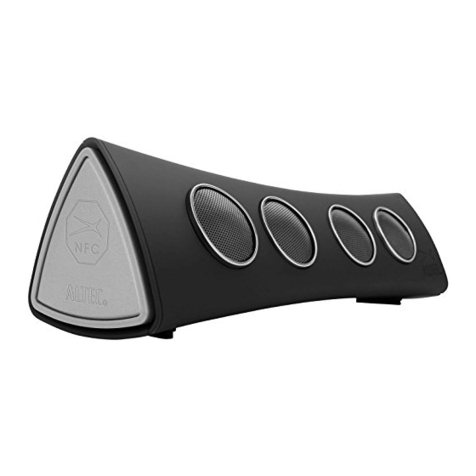
Altec
Altec iMW555 instruction manual
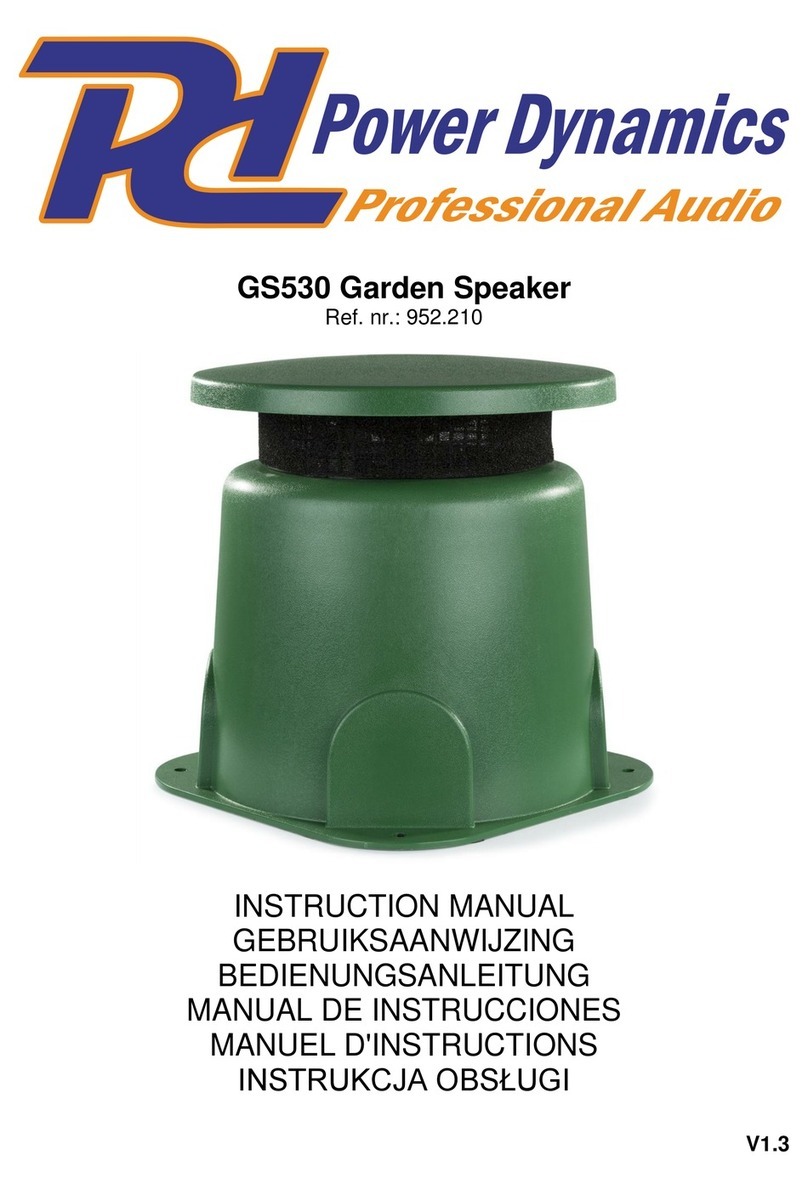
Power Dynamics
Power Dynamics GS530 instruction manual

Dynaudio
Dynaudio IC 17 Installation products

Jam
Jam Party HX-P730 Instruction manual and warranty information

musikelectronic geithain
musikelectronic geithain TS34 Instructions for installation and use
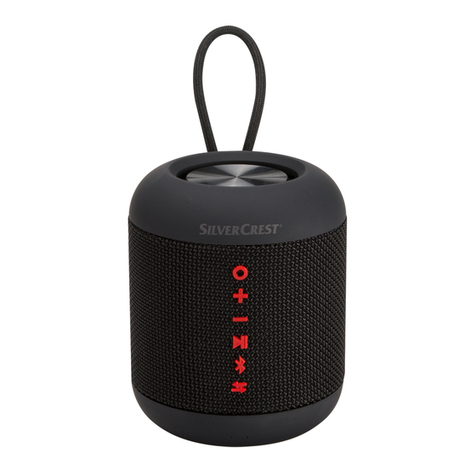
Silvercrest
Silvercrest SLM 5 A1 quick start guide
